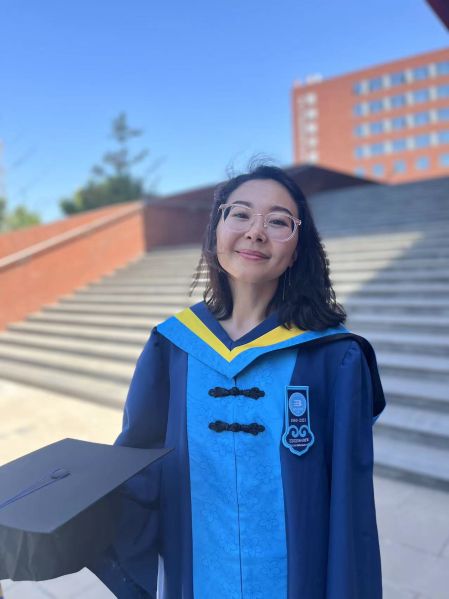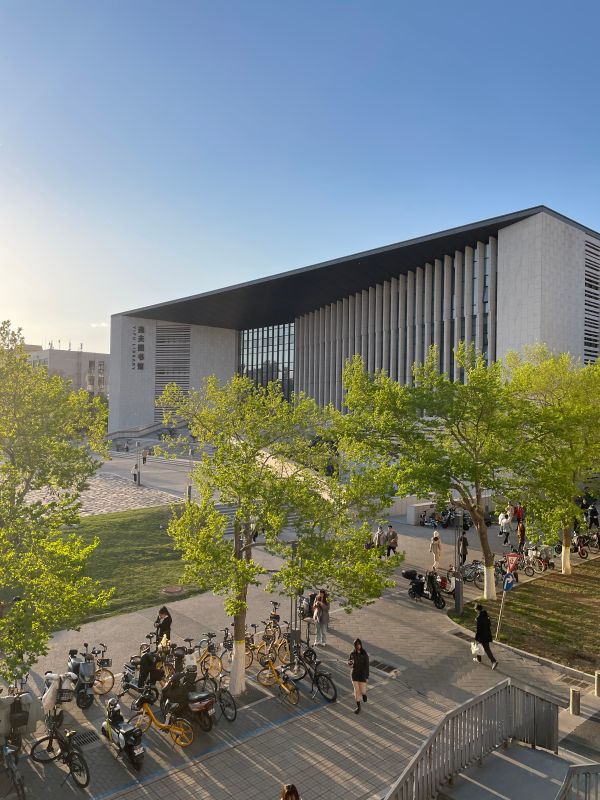Entering Datong: The World Is One
Date:2024-04-24 Author:STUDY IN CHINA
[Uruguay] Li Dai Debora Shanlin, Beijing University of Technology
The first time I learned about the word “Datong” was when I was reading the Confucian classics, and since then “Tianxiadatong” (means the world is one) has been deeply imprinted in my mind. I understand that “Datong” means the beautiful vision of fraternity, social peace, and cultural integration in ancient Chinese thought.
When I was reading a book called “Entering Datong,” I learned that Datong is also an ancient capital with a long history in China, famous for ethnic integration, reform and innovation, and a milestone in the localization of Buddhism. The open-air Buddha with a smile on the book cover and a deep gaze aroused my longing for Datong.
I’m about to graduate, so I’m eager to visit more places of interest before I leave China. Datong, just a two-hour drive from Beijing, became the destination of my trip, and it was the perfect opportunity for me to fulfill my dream of entering Datong many years ago.
In this way, I and two other international student friends set off for this ancient city with a long history – Datong. I wonder if the name of the city is derived from the ancient thoughts of “Datong,” but I have been looking for its connection with China’s “Datong” ideology, social peace and cultural integration along the way.
Datong quickly taught me my first lesson. We encountered some difficulties in swiping the QR code for paying the transportation fee on the bus. So we quickly tried other software, for fear of being kicked off the bus. The driver on the bus was a kind-faced woman, who didn’t urge us when she saw that we were all in a hurry to solve the problem. The vehicle drove for more than 10 minutes, but we couldn’t figure it out, so I went up to ask, and the driver patiently told us that there were many other kinds of applications that could be tried, and the problem was solved at last. After swiping the code, we could finally sit down and enjoy the beautiful scenery of Datong with peace of mind. While sightseeing, I thanked the driver for her understanding and tolerance, and thanked the first friendly Datong person I met.
The bus drove to Xingyun Bridge, crossed the Yuhe River West Trunk Canal, one could see the magnificent Datong Ancient City from afar. We were attracted by this mighty city wall, so we chose to get off and went straight to the ancient city. In this way, three backpackers from afar appeared in the ancient city, and one of them with thick beards and prominent exotic faces, which attracted the attention of the people around. Along the way, we heard many surprised and friendly greetings from passers-by, some of whom shouted “Hello!” Some shouted “Hi! foreign friends”, and some recited the “Analects” “There are friends from afar”, which made us smile and deeply feel the friendliness of the city, and we are especially grateful to the Datong citizens for this warm welcome gift to us.

Then Datong taught me a second lesson. The class is in the mysterious and amazing Xuankong Temple. Looking up at the Xuankong Temple from the bottom of the mountain, it is surrounded by cliffs above, deep valleys below and mountain rocks behind it, which not only has a thrilling and spectacular appearance, but also impresses me with the interior of the building. We followed the crowd and slowly climbed the stairs step by step to the top of the Hanging Temple. There is a hall of three religions here, in the middle sits the benevolent and serene Buddha Shakyamuni, on the left is the smiling and humble Confucian ancestor Confucius, and on the right is the Taoist ancestor Lao Tzu. The three ideas of Confucianism, Taoism and Buddhism all start from different perspectives to build a world of great harmony. The idea of three religions gathering in one hall was based on people’s recognition of the concept of the three religions with the same path. I was deeply touched by the fact that they taught people to do good deeds in different ways since 1,500 years ago, and I was deeply touched by the idea of the great harmony of a peaceful society.
From the downtown area of the ancient city of Datong to the west by car for more than half an hour, we reached the last scenic spot of our trip – the Yungang Grottoes that I have longed for a long time. I wondered what Datong spirit will I discover here.
As an important node of the Silk Road, Yungang Grottoes has brought together different cultures from all over the world since 1,600 years ago, which has been transmitted to the Central Plains through the Hexi Corridor. The Yungang Grottoes present an artistic epic of the fusion of Eastern and Western cultures. We hired a docent to lead us on a journey through the history of the grotto and the spirit it conveys. I couldn’t help but talk to the docent about Datong thought, and the docent smiled and explained: Datong, as the imperial capital of the Northern Wei Dynasty, the second capital of Liao and Jin dynasties, and an important city of the Ming and Qing dynasties, is the best embodiment of Datong thought.
That’s right, China is a multi-ethnic country. Since ancient times, the Chinese people have had the spirit of “valuing peace,” “being kind and good neighbors” and “harmonizing all nations.” Friendly coexistence, mutual assistance and equality are not only the basic value orientation for handling interpersonal relations and ethnic relations, but also the basic principle for China in handling relations with other countries. It is precisely this excellent traditional virtue that has laid the cornerstone of the Chinese nation’s foreign relations for the realization of the path of great harmony.






 京公网安备 11010802035729号
京公网安备 11010802035729号